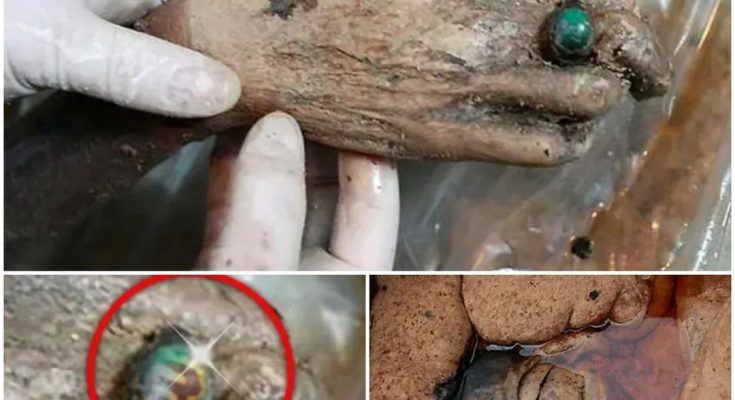Archaeological discoveries have a unique way of bridging the gap between the past and the present, and the unearthing of a 700-year-old intact Chinese mummy is no exception. This extraordinary find has captivated historians, archaeologists, and the general public alike, offering an unparalleled window into life during the Ming Dynasty. Here’s an in-depth look at the discovery and its historical significance.

The Accidental Discovery
In 2011, a construction crew in Taizhou, Jiangsu Province, China, made an astonishing find while digging a road. Beneath the earth, they uncovered a sealed tomb that contained the remarkably well-preserved remains of a woman believed to have lived during the Ming Dynasty (1368–1644). Despite being buried for seven centuries, the mummy’s body was astonishingly intact, with her skin, hair, eyebrows, and even her clothing remaining in exceptional condition.
The preservation was so effective that it seemed as though time had stood still for this ancient woman, offering modern researchers an extraordinary glimpse into the past.
Unraveling Ancient Burial Practices
The discovery of this mummy has provided invaluable insights into the burial practices and cultural traditions of the Ming Dynasty. The tomb’s airtight seal and waterlogged conditions were key factors in preserving the body, creating an environment that inhibited decay. Additionally, layers of silk, linen, and other textiles encased the woman’s body, reflecting the care and complexity involved in elite burials of the time.

What the Mummy Reveals
Clothing and Accessories
The mummy was dressed in elaborately embroidered garments made from luxurious materials, signifying her high social status. Alongside her clothing, accessories like rings and intricately designed hairpins were also discovered, providing a vivid snapshot of Ming Dynasty fashion and personal adornment.
Health and Lifestyle
Researchers conducted detailed examinations of her remains, including her teeth and stomach contents. These analyses revealed fascinating details about her diet, health, and overall lifestyle. Such findings help paint a broader picture of the daily lives and nutritional habits of Ming Dynasty citizens.
Cultural and Historical Context
This discovery offers a rare opportunity to study the artistry, materials, and burial customs of one of China’s most influential dynasties. It highlights the importance of ritual and preservation in Ming-era beliefs about life and the afterlife.
The Significance of the Find
The 700-year-old mummy is more than an archaeological marvel; it’s a time capsule that preserves the essence of an era long gone. From the intricate details of her attire to the innovative preservation techniques used, this discovery enriches our understanding of the Ming Dynasty’s sophistication and cultural priorities.

Challenges and Ethical Considerations
As with all discoveries involving human remains, this find raises important ethical questions. How should such remains be studied, displayed, or preserved? Striking a balance between scientific exploration and cultural respect is a critical aspect of handling such discoveries. Researchers must also consider the descendants and cultural significance tied to the remains.
A Tangible Link to History
The unearthing of this 700-year-old Chinese mummy is a poignant reminder of how much we can learn from the past. Each detail, from the threads of her garments to the condition of her skin, tells a story that connects us to a world that existed centuries ago. It’s a discovery that not only deepens our understanding of the Ming Dynasty but also fuels curiosity and appreciation for the richness of human history.
As technology and research techniques continue to evolve, who knows what other ancient secrets remain hidden beneath the surface, waiting to be unearthed?



